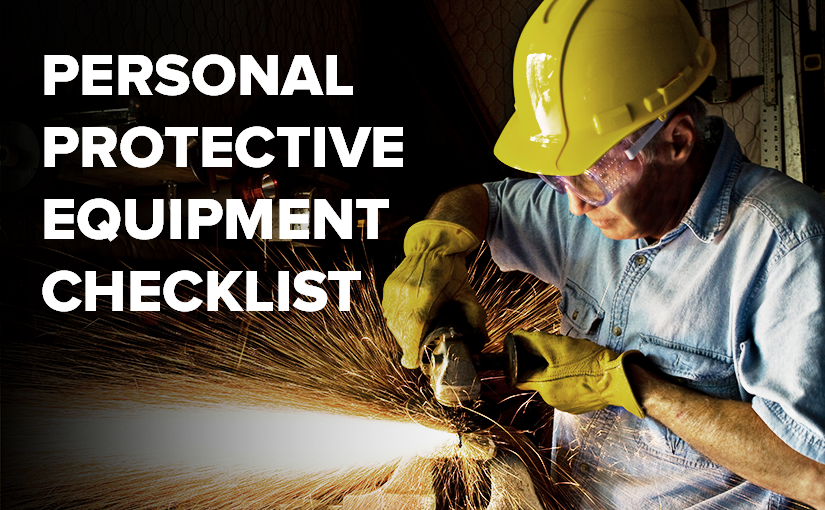To reduce workplace accidents and shield workers from potential hazards, it’s important to have a thorough plan for equipping workers with personal protective equipment (PPE).
Without protective equipment plan, employees are at risk of injury and employers could be subject to fines or penalties. OSHA stipulates that employers must pay for personal protective equipment for employees with the exception of prescription safety glasses, safety-toe protective footwear and other equipment or clothing that is personal or worn outside of the job.
To help determine which protective gear is necessary for the job, we’ve prepared a checklist of commonly required personal protective equipment below.
Eye Protection
When thinking about eye protection, it’s important to consider any occupational risk to the eyes or face. Common hazards include dust, liquid or chemical splashes, abrasive particles, sparks or molten metals, and it’s also important to consider comfort and the visibility requirements of the job.
In any situation that involves the hazards above, workers should, at a minimum, have a trustworthy pair of safety glasses, while some jobs may require full face shields or welding helmets. In many instances, certain types and colors of safety glasses can help improve visibility and job performance, so it’s important to consider that as well.
Head & Face Protection
In addition to the eyes, head and face protection is one of the most important areas to consider to prevent significant injuries at the workplace. Generally, a safety helmet is essential in environments where a worker could be struck on the head by a falling or fixed object, if a worker could potentially fall or if they could come into contact with an electrical hazard.
Hearing Protection
Each year, roughly 30 million workers in the U.S. are exposed to hazardous noise levels in the workplace. It’s estimated that about 125,000 workers suffer significant or permanent hearing loss each year while on the job. With these statistics in mind, employers are required to provide hearing protection to workers who are exposed to volume levels at or above 85 decibels for at least eight hours per day. However, even if workplace noises don’t reach 85 decibels, it’s still highly advised to provide hearing protection for workers.
Recommended hearing protection can vary by industry, though we previously outlined some of the best options for hearing protection in various work environments.
Hand Protection
In many professions, hand protection is absolutely essential when working with dangerous machinery or equipment or handling harmful substances or materials. However, there really is no one-size-fits-all glove for protecting the hands, so it’s important to identify the material and type of glove that works best for your industry.
Lucky for you, we’ve previously prepared guides on finding the right gloves for the job. You can find them listed below:
- Manual Labor and Civic Maintenance Professionals
- Driving, Welding or Landscaping Professionals
- Cooking, Cleaning, Medical or Life Sciences Professionals
Foot Protection
Finding proper foot protection is essential, though between the protection offered, the thickness of the material, and the type of sole, it’s important to make the right choice based on your industry and work environment. All workers in a laboratory, factory, workshop, construction or outdoor work environments should have enclosed footwear.
In workplaces with chemicals or harmful substances, all footwear should be resistant to hazardous substances. In workshops, construction sites or factory settings, boots with steel caps or increased protection are recommended.
Skin Protection
Employers aren’t typically required to provide most methods of skin protection (long-sleeve shirts, pants, sunscreen, etc.), though it is still a very important area to consider. Especially in outdoor environments, workplaces with exposure to flames or electricity or environments with hazardous substances and chemicals, employees should have adequate skin protection to ensure they aren’t exposed to potential harm.
To protect your employees from common workplace injuries and accidents, consider all of the areas of protection above and verify that the equipment you are providing is adequate. If you’re in need of safety equipment to protect your team, check out the U.S. Standard Products catalog. We offer a wide range of cost-effective, protective safety gear to help minimize workplace accidents and injuries.
For the latest safety tips, stay tuned to the U.S. Standard Products blog, or follow us on social media:

